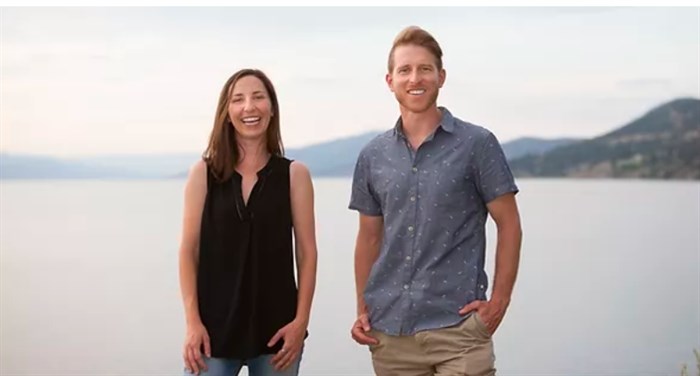
Stephanie Aitken and Christopher Szymberski are arborists and owners of Seed and Sparrow.
Image Credit: Submitted/Seedandsparrow.ca
August 15, 2022 - 7:02 AM
Last summer’s heat dome is not entirely to blame for numerous trees dying in the Okanagan this summer.
“We certainly are seeing the effects of prolonged heat and drought conditions here in the valley but we also had quite a cold winter – cold and wet in some cases,” arborist and co-owner of Seed and Sparrow, Christopher Szymberski, told iNFOnews.ca. “That may also be why a number of plants have died. Particularly for plants that are in semi-arid climates, when they have wet feet in the winter, that can do a lot of damage to the roots, particularly if it gets very cold.”
The real impact of the heat dome may not be seen until next summer since trees can take a long time to die.
“It’s not a quick process, typically,” Szymberski said. “Sometimes the tree will just defoliate in an effort to pull itself in, kind of like a turtle pulling its head into its shell. But, by doing that, it’s limiting the stores of carbohydrates that it can put into is roots as a resource to jump start itself the following spring.”
That means trees that overheated last year may struggle through this summer before finally dying.
“Its savings account, so to speak, is much reduced, by things like defoliating,” Szymberski said. “Much as ourselves. We can only limp along so much with shrinking funds and resources.”
The good news is the spring was cool and damp which allowed trees to recover somewhat.
But it’s not just the climate that’s to blame.
“There are a number of trees planted here that really are not well suited to the valley,” Szymberski said.
One of the most common are cedar hedges, other than in a few micro-climates.
“They are not suited at all for the Okanagan Valley,” he said. “They require a lot of supplemental water to keep green and growing.”
Another popular tree is Katsura, native to Japan.
“They’re lovely trees but they do better when planted closer to the lake or a higher water table,” Szymberski said. “They like to have wet feet. They do not do well as urban trees or in boulevards, etc.”
He’s seen a few in Kelowna where their entire tops have been lost after being scalded by the sun.
“They’re planted because they’re attractive,” Szymberski said. “They have wonderful fall colours. They have a very pleasant scent, like burnt brown sugar, when leaves change and fall on the ground.”
He’s not sure why so many are planted.
“Whether or not it’s a failure of the designer or landscape architect to specify correct trees, I think, is up for discussion and debate,” Szymberski said. “It can come down to the right tree in the right place. It also has a lot to do with soil volumes too and proper soil conditions.”
The City of Kelowna, on the other hand, recommends the Katsura on its Urban Trees webpage, noting it is pest resistant.
While they may disagree about the Katsura, Szymberski said that webpage is a good starting place when looking for a suitable tree to plant.
Both sources agree that the Tree of Heaven should not be planted in the area, even though it’s well adapted to the heat and drought and is fast growing. It’s an invasive species that can take over spaces.
Elm, both Chinese and Russian, are also invasive species whose seeds can fall like snow in the spring and sprout up in gardens, alleyways and along pathways.
READ MORE: UPDATE: 'Tragic and senseless': Vandals are poisoning trees in Kelowna
What is really needed in a city like Kelowna, Szymberski said, is a planned urban forest that provides continuity and interconnectivity rather than each development being done in isolation.
There needs to be a variety of species and ages so disease, climate or time don’t take a sudden toll on whole sections of the urban tree canopy.
READ MORE: These urban foresters in Kelowna, Kamloops work to make their booming cities greener
To contact a reporter for this story, email Rob Munro or call 250-808-0143 or email the editor. You can also submit photos, videos or news tips to the newsroom and be entered to win a monthly prize draw.
We welcome your comments and opinions on our stories but play nice. We won't censor or delete comments unless they contain off-topic statements or links, unnecessary vulgarity, false facts, spam or obviously fake profiles. If you have any concerns about what you see in comments, email the editor in the link above.
News from © iNFOnews, 2022